You can’t truly capture Mexico in dry prose–the best books on Mexican history color outside the lines. Here’s our picks for a Mexican history starter kit.
The word patrimonio comes up more often than not in Mexican writings and conversations about mezcal. This translates to patrimony or heritage. And it makes sense that it’s a foundational concept when contemplating the meaning of mezcal. Mezcal is a purely Mexican cultural product, and the factors that make it fascinating are deep and extend far beyond production processes or terroir. In short, it’s impossible to gain a deeper understanding of mezcal without gaining a deeper understanding of Mexico–tall order as that may be!
History is an obvious place to start. The forces that shaped mezcal are the forces that shaped Mexico–Indigenous knowledge, tradition, and innovation; conquest; voluntary cultural exchange, dirty politics, ecology, geography; and, of course necessity, that dear old mother of invention. If you love mezcal and seek a deeper understanding of these forces, here’s a handful of compelling and illuminating books.
(Oxford University Press, 2021)
But what were the Aztecs really like? Camilla Townsend takes a stab at answering this vital question in Fifth Sun, a lyrical retelling of the story of the Mexica (Aztec) people that’s based entirely on their own accounts. Instead of relying on codexes, Townsend has pored through a significant body of work by Mexica survivors of the conquest and their descendents–typically in their own language (Nahuatl) but written in the Roman alphabet. The stories that emerge challenge conventional understanding of “ancient Aztec” culture, as gleaned from the accounts of conquistadors and missionaries. Townsend’s writing is thoughtful, vivid, and fun to read. She has traced a chronological history that’s dotted with vibrant detail–from descriptions of the gardens and aviaries of Tenochtitlan to snippets of Mexica jokes and songs. Occasionally, she drifts into editorializing that feels unnecessary, but the overall body of work is fascinating.
(Not to be confused with The Fifth Sun: Aztec Gods, Aztec World by Burr Cartright Brundage. This may also be good, but I haven’t read it.)
(International Publishers, 1969–originally published in 1914)
Imagine riding with Pancho Villa. John Reed did. In 1913, the young American journalist traveled to Mexico to cover the revolution for Metropolitan Magazine. Insurgent Mexico represents his dispatches from the front. This is fine journalism laced with grit and poetry. Reed’s writing is fluid–simultaneously matter-of-fact and poignant. As you might imagine, he has incredible adventures, while affording the reader a front-row seat to the revolution. But of equal interest are the glimpses of life in Mexico in 1913. (Reed would go on to write Ten Days That Shook the World, which remains a touchstone for scholars of the October Revolution. He died of Typhus in Moscow in 1920 at age 32.)
Alcohol in Ancient Mexico by Henry J. Bruman
(University of Utah Press, 2000)
Originally written as a dissertation in the 1930s, this fantastic book is the result of years of fieldwork in the mountains of Mexico, where Bruman observed how people fermented and drank alcoholic beverages, including pulque, tesgüino, and mead–as well as less widely known drinks such as plantain wine and toad-infused chicha. Every chapter is wonderfully detailed, but Bruman writes clearly and without pretense. A fascinating and unique reference that offers a window into the roots of mezcal. For nerds only.
Mexican Kaleidoscope: Myths, Mysteries, and Mystique by Tony Burton
(Sobrero Books, 2016)
This book is all over the map in a good way. A geographer with a degree from Cambridge, Burton spent decades exploring unusual and surprising cultural and historical phenomena in Mexico. In Mexican Kaleidoscope, the author jumps through time and space, providing representative glimmers of the magnificent oddity that defines Mexico while shedding light on everything from the Manila connection to the oldest winery in the Americas. Chapters include “Deceptive national symbols,” and “Mexican cats have only seven lives?” as well as less fanciful topics such as “Afro-Mexicans outnumbered Spaniards.” Burton’s writing is informative, but the short chapters and diverse topics make this an easy read.
Other great books by the author: Geo Mexico: The Geography and Dynamics of Modern Mexico and Western Mexico: A Traveler’s Treasury (This is a fun armchair read, but a fantastic resource if you’re planning a road trip through western Mexico. Burton details the histories and architectural details of towns and cities, from Guadalajara and Puerto Vallarta to off-the-beaten path gems like Eztatlan.)
Mexico: Biography of Power: A History of Modern Mexico 1810-1996 by Enrique Krauze
While it’s simplistic to ascribe the character and policies of an era to the head of state, I am a sucker for presidential biographies–and the pantheon of Mexican presidents is quite a cast of characters. Historian Enrique Krauze uses the stories of power brokers to explore the forces that shaped modern Mexico, in particular how powerful people have exploited existing historical narratives and myths to further their own agendas. Krauze isn’t afraid to question Mexico’s sacred cows. He’s opinionated (and I don’t always agree with opinions), but if you take some of his stances with several grains of salt, this is a good way to get acquainted with major turning points in the country’s history–from the viewpoint of a national historian.
El Monstruo: Dread and Redemption in Mexico City by John Ross
(Nation Books, 2009)
John Ross first traveled to Mexico in 1957. He was a beat poet from New York, but younger than most of his peer group. He would later arrive in Mexico City to report on the 1985 earthquake and end up living in a hotel in the historic downtown until his death in 2011. A dispatch from Ross’s sepulchral room at the storied Hotel Isabel, El Monstruo is a history of the city like no other. Ross traces the evolution of the valley of Mexico from primary ooze to the 21st century, and in doing so creates a masterful tapestry threaded with his memories. Through conversations with intellectuals, street sweepers, and neighborhood heroes, he adds first-person accounts of the city’s history, while capturing the seething brilliance of the Centro Historico neighborhood. Ross writes with vim and vigor–he’s prone to dropping a gritty phrase. His descriptions are wonderfully evocative and often quite funny. A rich exploration of Mexican history through the lens of its magnetic capital.
La Noche de Tlatalolco/Massacre in Mexico by Elena Poniatowska
(Viking Press, 1975)
Originally published in Spanish in 1971, this oral history of the 1968 student massacre in Mexico City stood as a bulwark against a government cover up. Shortly after the masscre, Poniatowska collected significant testimony from people in the streets, but the book starts with short recollections and quotations that give context on the student movement and the build-up to the protest. If you’re interested in more context on the massacre before reading an oral history, Ross (mentioned above) does a deep dive.
El Narco: Inside Mexico’s Criminal Insurgency by Iaon Grillo
(Bloomsbury Press, 2011)
Investigative journalist Ioan Grillo tells the story of how narcos went from cogs in the international drug trade to the de facto lords of Mexico. The result of intensive and intense on-the-ground research, El Narco is a gripping read. Grillo consistently put himself in real danger to get a good story. And it is a good story. His writing is fast-paced and punchy, with a gallows humor that’s likely the result of reporting from the front lines in Latin America since 2001. From cartel training camps to crime scenes, Grillo takes the reader on a journey into the heart of darkness. Yet he writes with compassion and curiosity, giving equal weight to the words of a DEA agent and a junkie in a Boys Town cantina in Nuevo Laredo. A remarkable book.
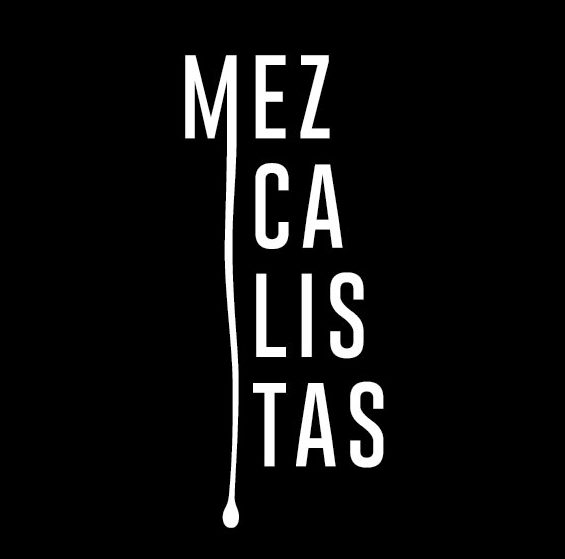
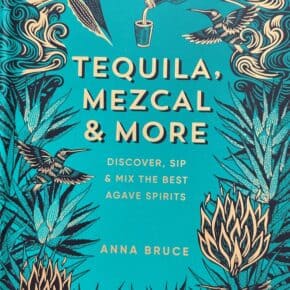
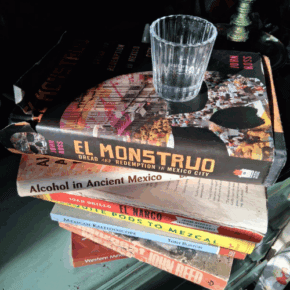
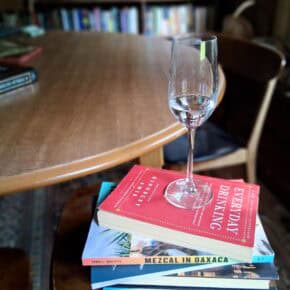



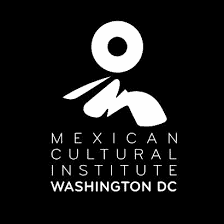
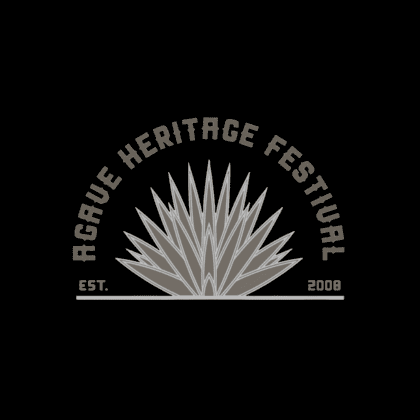


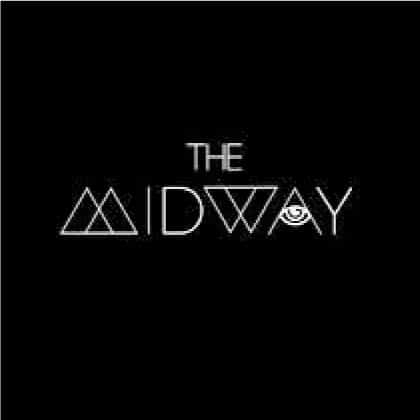
Mostly american or english speaking authors.
Hi Adrian. Thanks for reading and commenting. I am accutely aware that’s a flaw of this list! I’m always looking to read more and build my library. I welcome your recommendations. I’d like to make this a series and include more national authors next time. Since this is a mainly English website, I’m mainly looking for books that are also available in English, though I do read in Spanish and like to include some Spanish-only books for our bilingual readers.
Hi Felisa, Appreciate the openness—and I agree English availability matters. For your next installment, here are Mexican voices that I believe deepen mezcal’s context and are accessible: Bonfil Batalla — México Profundo; Octavio Paz — The Labyrinth of Solitude; Claudio Lomnitz — Death and the Idea of Mexico (one of my favourites); Juan Villoro — Horizontal Vertigo; Alma Guillermoprieto — The Heart That Bleeds.
For bilingual readers: Ulises Torrentera — Mezcalaría; Ana G. Valenzuela-Zapata — works on agave/mezcal.
Thanks, Adrian. I’ve read Valenzuela, Torrentera, and some Paz, but not The Laybyrinth of Solitutde. I look forward to checking these out, particularly Death and the Idea of Mexico.
Sent you a very interesting read via IG. Maybe someone could piggiback it to the US if you are based there.